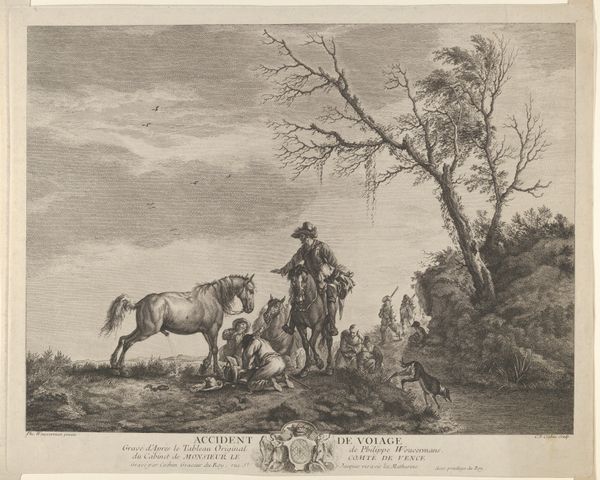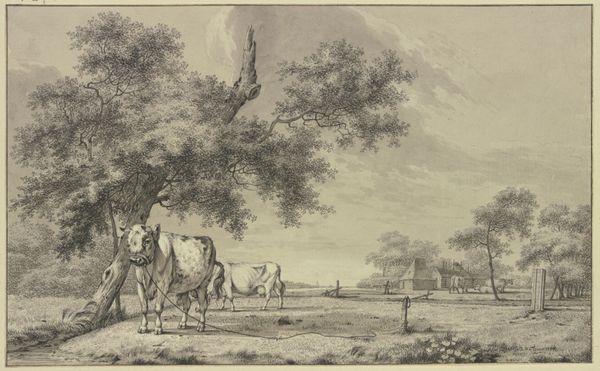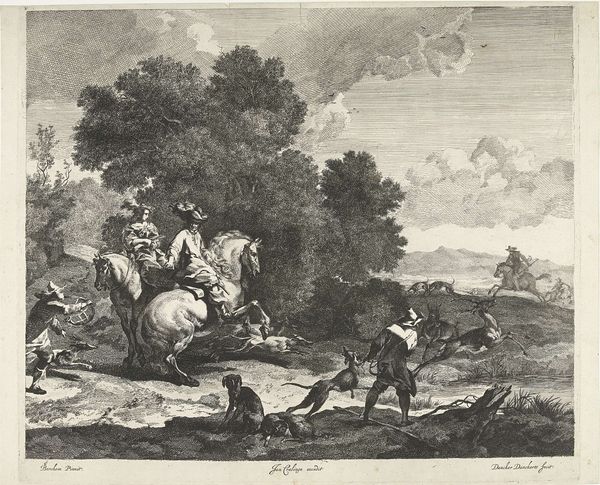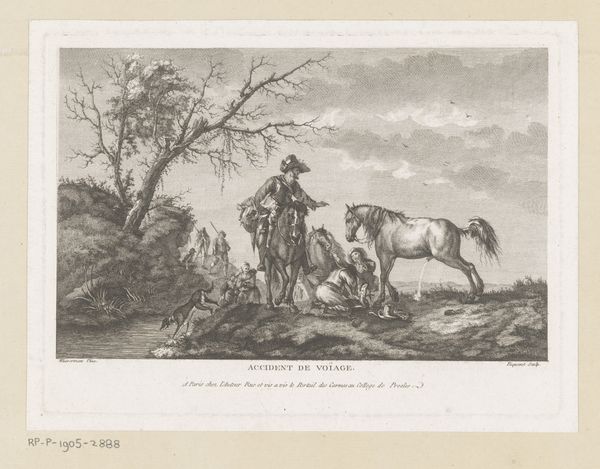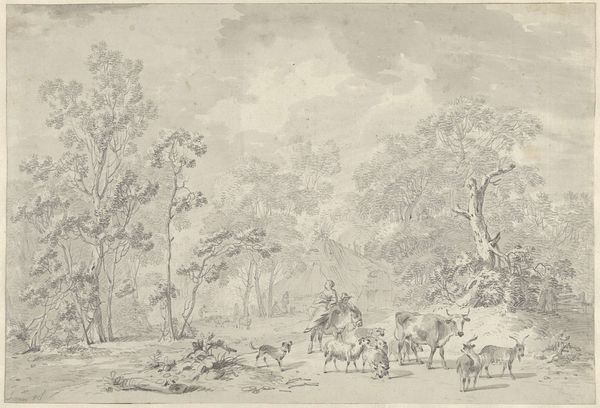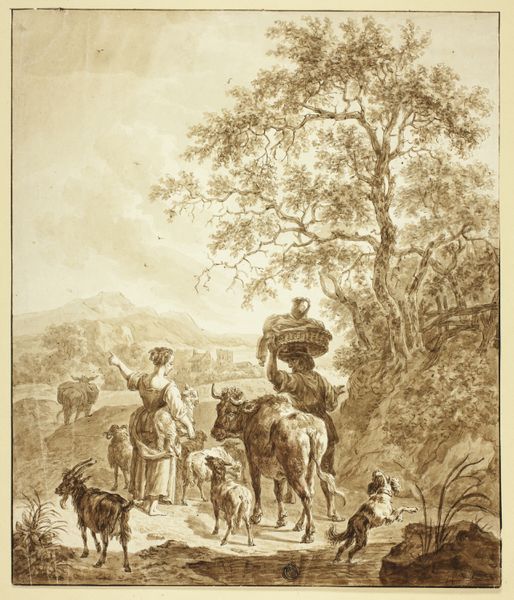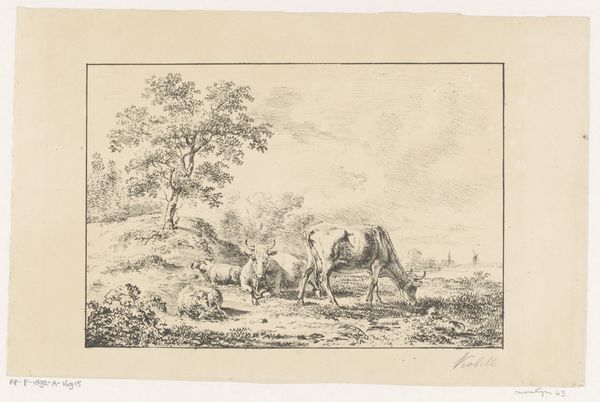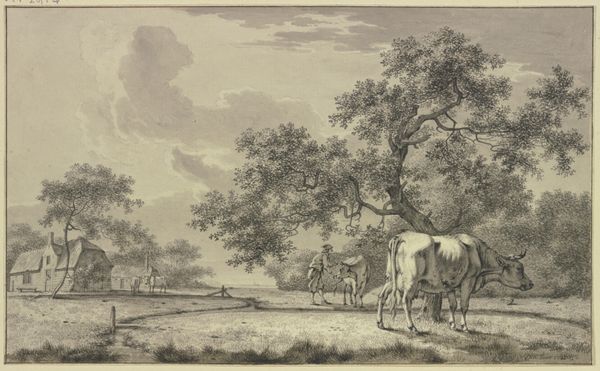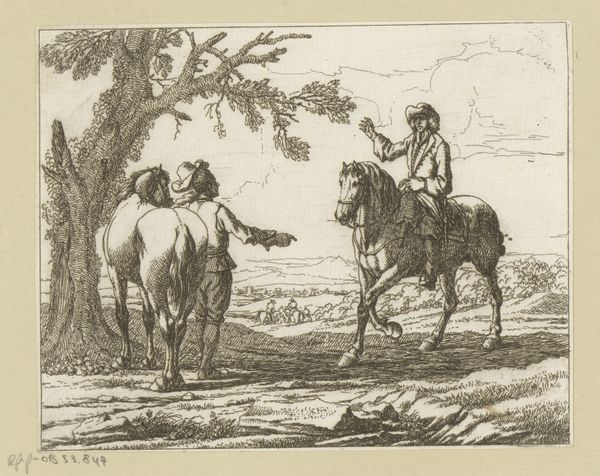
Ein Bauer bei seiner Kuh stehend verfolgt den Kampf zweier Ziegenböcke
0:00
0:00
drawing, ink, pencil, chalk
#
pencil drawn
#
drawing
#
pencil sketch
#
landscape
#
ink
#
pencil drawing
#
pencil
#
chalk
#
15_18th-century
#
genre-painting
#
watercolor
Copyright: Public Domain
Curator: This drawing is titled "Ein Bauer bei seiner Kuh stehend verfolgt den Kampf zweier Ziegenbocke" – "A Farmer Standing by His Cow, Watching Two Billy Goats Fight," attributed to Bernhard Heinrich Thier. Editor: There's a striking tranquility to this scene, despite the suggested conflict in the title. The soft chalk lines create a sense of serenity. It's almost pastoral. Curator: Indeed. And while the artwork is somewhat sparse in detail, especially when focusing on the background, the piece speaks volumes about the hierarchy of labor in the context of eighteenth-century agrarian society, with the farmer passively observing nature. Editor: I'm especially drawn to how gender plays out here. The cow becomes a symbol of docile domesticity while the fighting goats act out some masculine trope, and that framing puts the farmer himself into a relationship of presumed control and dominance over that realm. It all feels very constructed, staged. Curator: Well, you could push further into how landscapes at the time operated as highly constructed representations of social order and class structures. Notice that the medium of this piece itself – chalk, pencil, ink – all contributes to the artist's position of making commentary with deliberate intention. Editor: And how does that position get circulated in sites like museums? Shouldn't we also look at how art historical narratives around works such as this impact what type of person we assume visits this piece today, and with what degree of presumed authority to look and comment. Curator: I agree. We need to also analyze the cultural norms reproduced when a museum chooses to elevate a scene of rural, working-class life to an art object, even if this kind of picture had its popular consumers already in the 1700s. It also begs the question: for whom does this image still hold a kind of power? Editor: I appreciate the chance to situate this relatively simple piece within those more complex frames, understanding it as much more than just a depiction of country life. Curator: Likewise, by acknowledging that there’s more going on than just goats fighting and a cow chewing cud, we bring it into conversation with important discussions we should all be having about power and representation.
Comments
No comments
Be the first to comment and join the conversation on the ultimate creative platform.

